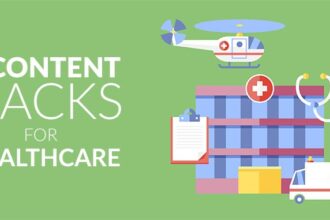A large part of managing a patient over a long period of time is communicating with the patient. All old (follow up) cases in medical practices have niche requirements and expectations from their doctors. A satisfied patient is a doctor’s most powerful marketing asset. Healthcare professionals should strive to provide all old (follow up) cases with special features to improve quality of service, which in turn will increase the Patient Satisfaction Index.
A large part of managing a patient over a long period of time is communicating with the patient. All old (follow up) cases in medical practices have niche requirements and expectations from their doctors. A satisfied patient is a doctor’s most powerful marketing asset. Healthcare professionals should strive to provide all old (follow up) cases with special features to improve quality of service, which in turn will increase the Patient Satisfaction Index.
A well ‘endowed’ medical website allows doctors to assist patients in their day-to-day living by providing timely solutions for all their health queries even after a visit. For a patient, this continued access to expert medical advice via simple online tools is one of the most cherished features of any e-practice.
Despite best efforts, many patients make errors while following medical advice. Many times, follow-up patients have new queries they wish they could simply share with their doctors. A large number of patients also do not ask new questions just because they don’t want to look stupid in front of their doctors! These patients are often unsure of the importance of their queries and generally procrastinate visiting their doctors for answers. Sometimes new complaints crop up which may or may not affect the ongoing medical management. The internet, via a medical website, allows doctors to clarify many such small doubts these patients face while following medical advice. A timely word of advice can save these patients a whole lot of pain, literally and figuratively. Important issues which may arise during such advice can be solved by arranging for a new visit.
There are a number of ways medical websites and integrated web 2.0 tools can be used to help doctors improve patient-doctor communications and thus decrease the morbidity among patients. Let’s look at three such applications:
The Embedded Form:
Medical websites allow all registered members (i.e. follow-up cases) to access some parts of the website which are meant only for them. A simple form is embedded within this secure area through which a follow-up patient can ask a question. These questions are then directed to the doctor’s email address. The doctor can answer such questions securely via email or even ask the patient to book an appointment if required. Ideally, doctors should create an email id purely for answering queries of follow up cases. This will help in segmenting all electronic medical communications between doctors and patients. All such queries are also automatically added to electronic medical record of that patient.
Chat Widgets:
Chatting on the internet is something most patients are comfortable with. Medical websites can have widgets which allow patients to directly chat with the doctor or the doctor’s representative. This is a common and simple to add functionality within any medical website. Patients can be given pre-decided timings (say, 9 p.m – 10 p.m on Mondays, Wednesdays and Fridays) when the doctor shall be available for the chat. Such chat transcripts can then be appended to the electronic medical record of the concerned patient. More people can be added to chats so as to allow group discussions (e.g: Friday evening hour long chat session for all Pregnant women, in case of gynae practices).
Facebook Groups and Video Chat:
After email, Facebook is the most commonly used online platform for communications. Doctors can easily use this platform (by forming closed groups) for answering some of the common queries by their patients. All follow up patients who share their primary email id can be added to specific closed groups on Facebook. These patients can post their queries on the group wall (which is not public and viewable only by group members) or send it as a direct message. Answers which have general significance for all patients can be posted on the group wall (e.g.: I am taking Metoprolol XL 50 mg once daily for my hypertension. I am scheduled for a tooth extraction next week. What precautions should I take? ). Personal queries can be answered via direct messaging. Urgent and important issues can be simply escalated to a telephonic conversation. Over time, such a Facebook group shall mature into a powerful resource for all new members. Questions which require visual inputs (like appearance of rashes or swelling on hands and feet) can be handled by using Video chat within Facebook. Important advice can be reinforced by typing it into the chat area so as to create a transcript document of the encounter. There are medical social media guidelines published by many international organizations which can be followed for all such patient-doctor communications on Facebook.
Doctors can also use Skype and payment gateways like PayPal to organize revenue generating e-visits by follow-up cases who find it difficult to physically visit the clinic premises at regular intervals. This is especially the case with geriatric and physically challenged patients. For more such innovative medical uses of the internet, kindly write to a.patkar@plus91.in or visit www.websitesfordoctors.in







